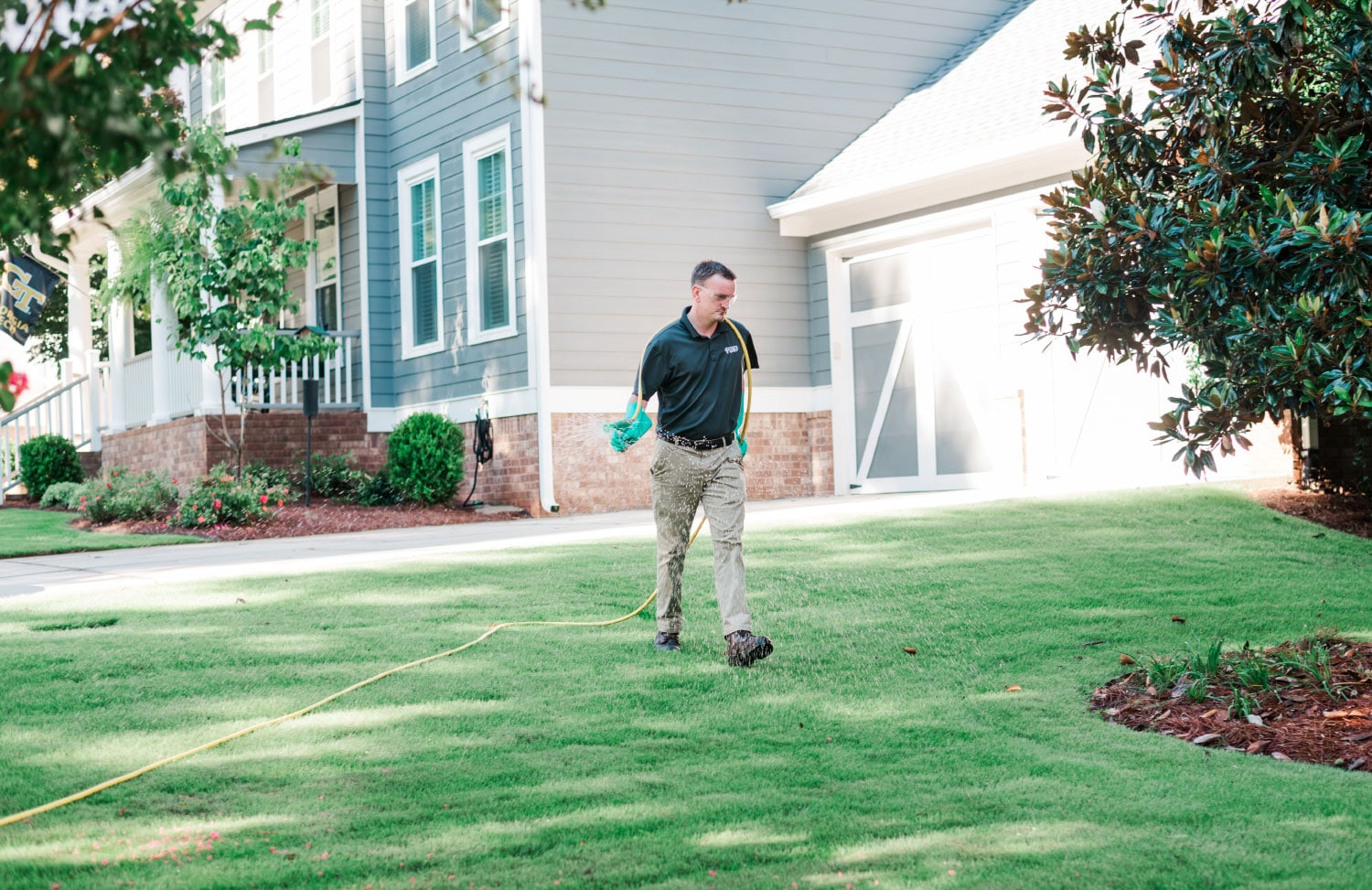Imagine your yard in summertime. It’s beautiful. The grass is green, the trees have replaced their leaves with a new season’s growth, and the birds are chirping. It would be perfect, except… an armadillo has come through and dug holes in your yard. It must be looking for grubs, right? We will answer that question, but let’s discuss what grubs are first.
What Are White Grubs?
White grubs are the immature stages of Japanese, May/June, Green June, or Masked Chafer beetles. These beetles become adults through a process called complete metamorphosis, which simply means the babies don’t look like the adults. In school, we learned how caterpillars become butterflies. This is the same process, but instead of eating holes in our leaves, grubs eat the roots underground.
In summer, female beetles will burrow underground and lay eggs. When these eggs hatch, they remain underground and become the pesky grubs we’re discussing here. They remain grubs for an extended period of time, generally around a year for the species and climate in Georgia. After these larval stages, a grub becomes a beetle, much like a caterpillar becomes a butterfly, but instead of hanging from a branch in a cocoon, their chrysalis (the protective covering) is underground. As adults, they emerge from the ground, where they may become pests in other ways before creating new eggs that will be deposited into the soil again.
How Do I Know If I Have Grubs?
Back to the armadillo. The armadillo is digging, and it has to be for grubs, right? Not necessarily. It is true that armadillos love a good grub feast, but they also forage for worms and other insects. Other animals that may damage your turf in similar ways are: moles and voles that tunnel, cicada killers that make dens, and squirrels that dig for food.
Diagnosing grubs can be challenging. In a previous blog, we discussed the diagnosis of grubs. Signs that you’ve got a grub population above threshold in your lawn are:
- inexplicable decline or dead patches
- spongy turf
- foraging animals.
At this moment, you may be thinking that “above threshold” means there must be an acceptable number of grubs beneath threshold, and that is correct. Grubs are a regular occurrence, and most of the time, go unnoticed if there are too few to create noticeable damage. In the blog linked above, we feature a video explaining how to flip the turf in your yard to determine if you have grubs and how to determine if they exist in numbers large enough to cause damage.
What Should I Do If I Have Grubs?
Determine that grubs are causing your issues. If you notice the signs of grubs, it may be time to dig deeper, quite literally. Once you’ve confirmed that grubs are your issue, it’s time to contact Nature’s Turf.
Choose one of two treatment methods for present grubs. At Nature’s Turf we have two primary treatment options for your grub troubles:
- For customers experiencing perennial troubles with grubs, our Grub Control program uses a product called Acelepryn. We think highly of this product, and you can learn more about it here. In summary, it’s a one-time treatment that offers great grub control, as well as fantastic suppression of Army Worms.
We also offer Active Grub Control for customers experiencing unexpected grub damage.
Important Takeaways:
- Grubs are the larval stages of beetles. Similar to how a caterpillar becomes a butterfly, a grub becomes a beetle. Caterpillars feed on leaves, but grubs feed on roots.
- This root feeding is what causes the damage we want to avoid. Weak or dead spots and spongy areas in your lawn are indicative of grub trouble.
- Foraging by animals can be an indicator of grubs, but confirmation of the grubs and the number present are important to determine if treatment is necessary.
- Once you determine that grubs are causing your woes, reach out to us at Nature’s Turf. We are more than happy to discuss the treatment options we have to rid your yard of these curious curly critters.








